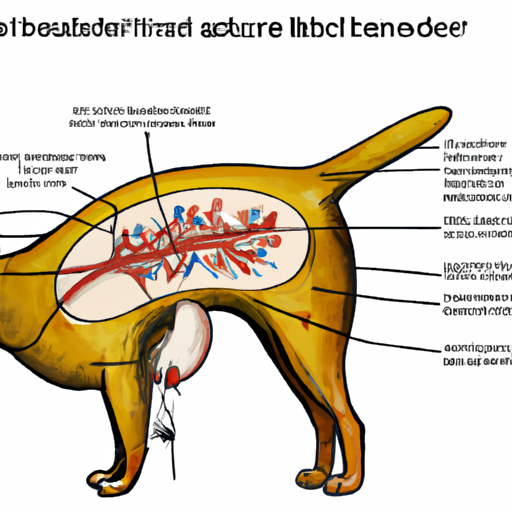Ever wondered about the internal mechanics of your beloved canine companion? One such mystery that many dog owners ponder over is how big is a dog’s bladder? Well, you’re in for a treat as this article will delve into the fascinating world of canine anatomy and specifically focus on the size, function, and health of a dog’s bladder.
Contents
- Understanding a Dog’s Bladder
- Factors Influencing Bladder Size
- Common Bladder Problems in Dogs
- Frequently Asked Questions
Understanding a Dog’s Bladder
The bladder is a vital organ in a dog’s body, playing a critical role in its urinary system. The primary function of the bladder is to store urine until your dog is ready to excrete it.
The size of the bladder can vary greatly among dogs. On average, a healthy dog’s bladder can hold around 10 to 20 milliliters per kilogram of body weight. This means that for a 10 kg (22 pounds) dog, the bladder can typically hold about 100 to 200 milliliters of urine.
However, these figures are averages and can be influenced by several factors, which we will discuss in the next section.
Factors Influencing Bladder Size
Several factors can influence the size of a dog’s bladder:
-
Size and Breed of the Dog: Larger dogs generally have larger bladders than smaller dogs. Similarly, the breed of the dog can also play a role in the size of the bladder.
-
Age: The age of the dog can also influence the size and capacity of the bladder. Puppies, for instance, have smaller bladders and need to urinate more frequently than adult dogs.
-
Health and Medical Conditions: Certain health conditions can affect the bladder’s capacity. For instance, bladder stones can reduce the volume of the bladder, forcing the dog to urinate more frequently.
-
Hydration Levels: The more hydrated a dog is, the more often it will need to urinate, which can influence the perceived size of the bladder.
Common Bladder Problems in Dogs
Understanding the size and function of a dog’s bladder is vital, not just for curiosity, but more importantly, for keeping an eye on your pet’s health. Bladder problems in dogs can be serious and require immediate medical attention. Here are a few common bladder issues that dogs may encounter:
-
Urinary Tract Infections (UTIs) – UTIs can cause frequent urination, discomfort, and even blood in the urine. If you notice these symptoms, it’s crucial to seek veterinary help immediately. PetMD provides a comprehensive guide on UTIs in dogs.
-
Bladder Stones – Similar to kidney stones in humans, dogs can also develop bladder stones, leading to discomfort and frequent urination.
-
Bladder Infections – These are often caused by bacteria and can lead to serious health problems if left untreated.
-
Incontinence – This is often seen in older dogs and can be a sign of a larger health issue. Check out this informative article on One Top Dog regarding health issues in dogs, including incontinence.
Frequently Asked Questions
-
How often should a dog urinate? – On average, a healthy dog should urinate between 3 to 5 times a day. However, this can vary based on the dog’s hydration levels, diet, and exercise routine.
-
Can you train your dog to urinate less frequently? – While you can train your dog to follow a bathroom schedule, it’s crucial not to force your dog to hold its urine for too long. This can lead to health issues such as UTIs or bladder stones.
-
How can I tell if my dog has a bladder problem? – Frequent urination, discomfort while urinating, or blood in the urine can be signs of a bladder problem. If you notice any of these symptoms, seek veterinary help immediately.
-
How can I support my dog’s bladder health? – Provide your dog with constant access to fresh water and regular opportunities to urinate. Regular vet check-ups are also key to catching any potential issues early on.
Understanding your dog’s bladder size and keeping an eye on their urinary health can help ensure your furry friend stays healthy and happy. For more on this topic, visit One Top Dog’s page on dog anatomy. And remember, when in doubt, always consult with a veterinarian.
For more advice on caring for your dog, check out these tips from One Top Dog on general dog care.



